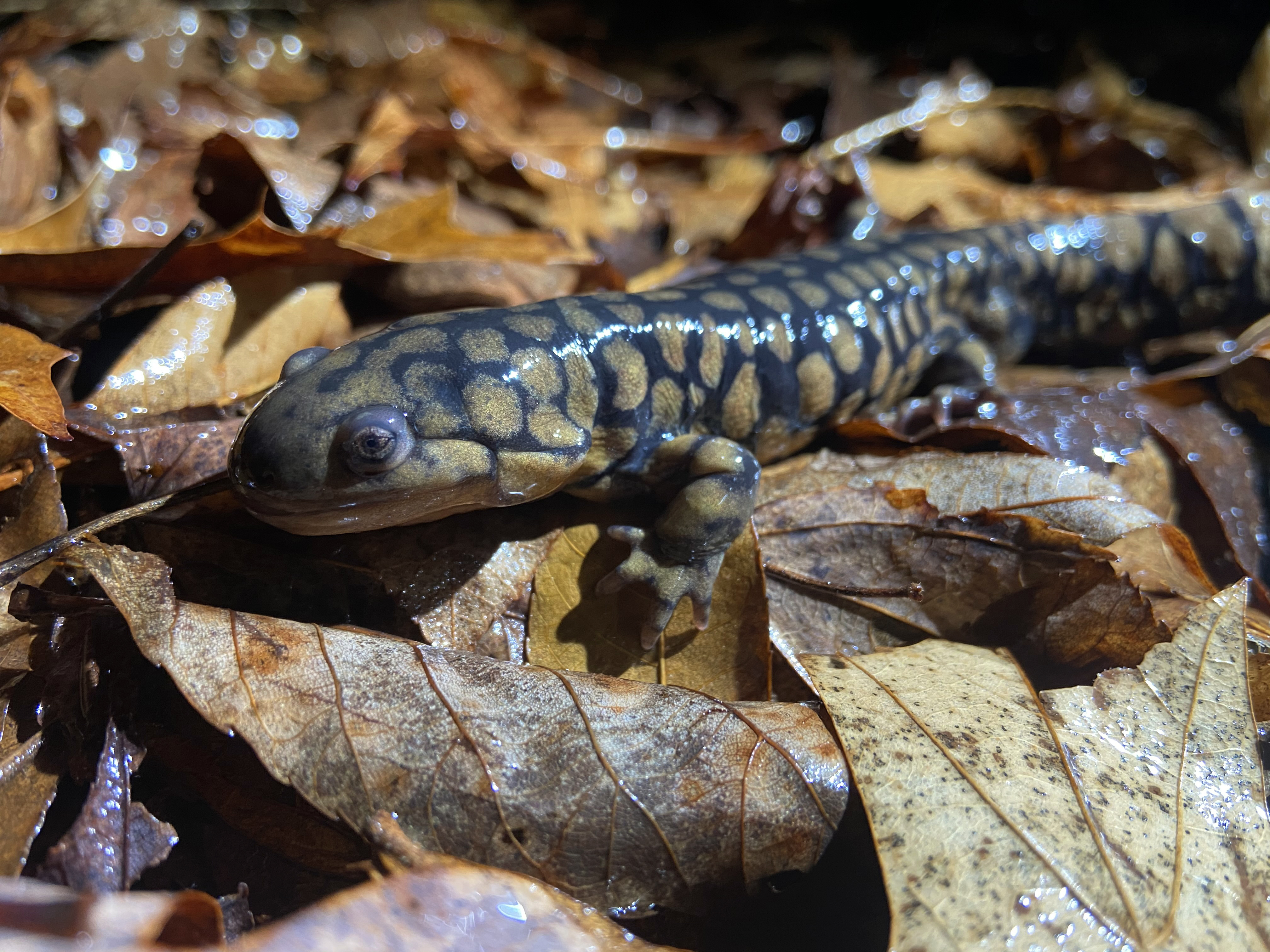
The South Fork Natural History Museum has received a $30,000 grant from the Hollomon Price Foundation, which provides funding to protect endangered species and other environmental causes, that will enable it to conduct a three-year study to track the movements of eastern tiger salamanders around confirmed breeding pools in the Long Pond Greenbelt Preserve.
The study is designed to determine the range of the amphibians, which are on New York State’s endangered species list.
The New York State Department of Environmental Conservation restricts activity within 500 feet of a known breeding pond, but Frank Quevedo, SOFO’s executive director, said there is little scientific evidence to assume that is the true limit of the salamanders’ range. “We believe they use a hell of a lot more than that,” he said. “I don’t think there has ever been a study as to how they use the habitat around their breeding ponds.”
He said he once saw a tiger salamander crossing the Bridgehampton-Sag Harbor Turnpike well over 500 feet from the nearest pond.
Quevedo said the study comes at a critical time, as PSEG Long Island has proposed laying an underground cable to East Hampton along its right-of-way across the greenbelt. Local environmentalists, citizens, and elected officials have sought to reroute that cable along the Bridgehampton-Sag Harbor Turnpike to avoid vernal ponds along its path. PSEG has yet to make a final decision on what route it will pursue.
The data collected during the study will be used to help state, county, and town officials in developing policy to guide future development projects around the greenbelt, a 1,900-acre system consisting of ecologically significant forest and wetlands, including 13 unique coastal plain ponds. The greenbelt is considered to be one of the most biodiverse ecosystems in the state.
The ecosystems found in the greenbelt provide habitat for a variety of rare and imperiled plants and animals, including the tiger salamander, which spends most of the year in underground burrows and tunnel systems. During the breeding season, adults emerge from their burrows, migrating to seasonal wetlands known as vernal pools, delicate ecosystems that are particularly sensitive to disturbance, to complete their breeding cycle.
As part of the study, SOFO staffers, who will be trained for the task by veterinarians, collect up to 25 adult or juvenile salamanders and insert tiny radio transmitters no larger than a pellet into the animals’ tissue, Quevedo said. Once they recover from the procedure, the salamanders will be released and their movements tracked over time.
“This is all good stuff, necessary data to collect,” he said. “I feel really lucky we get to do this.”
The salamanders themselves may feel luckier. Tiger salamanders come back to the same breeding pond every year. “If you take the habitat away from the tiger salamander, there goes the salamander,” Quevedo said.
With development moving into the wooded areas surrounding vernal ponds, precious habitat has been lost. “There are a lot of ponds that used to have tiger salamanders that are now surrounded by big mansions,” Quevedo said. “And now there aren’t any more salamanders.”
Quevedo said SOFO was thankful for the Hollomon Price Foundation’s support.
“This study will add to the museum’s mission in continuing to educate the public and enable us to inform the scientific community and natural resource managers to better understand the sensitivity of this magnificent animal,” he said. “It is our responsibility as caretakers of the planet to protect this species.”